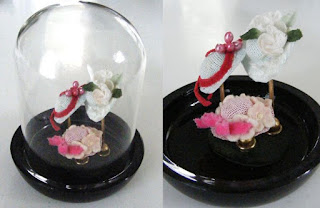For the past several weeks I have been busy putting the final touches on the charts for three new designs, and late last week I breathed a great sigh of relief when I took them off to the printer. The designs are scheduled to be released through Norden Crafts at the St. Charles Market, August 22-24, 2013, and you can ask your favorite needlework shop to pre-order them for you.
First is an original design, Evergreen Friendship, which I have dedicated to my wonderful friend Mary. We met in the summer before our junior year in high school over 50 years ago, and she has been my dearest friend ever since.
The verse I chose for the sampler is one which was popular in autograph books in the late 18th and early 19th centuries.
 |
| Evergreen Friendship |
The model is stitched on 32ct Pecan Butter linen by Lakeside Linens and is stitched with 6 colors of Gentle Arts Sampler threads, one of Weeks Dye Works, and one of DMC. The stitch count is 133 wide by 113 high and the design size is approximately 8.3 inches by 7.1 inches. It stitches up quickly, and would make a great gift for your own best friend.
The next design is God Bless My LNS, a little tribute to Local Needlework Shops everywhere. (Where would we be without them!) I have dedicated this to my beloved LNS, House of Stitches in La Porte , Indiana
 |
| God Bless My LNS |
The model was stitched on 30ct Straw linen by Weeks Dye Works. using ThreadworX overdyed cotton No. 1154 “Bradley’s Balloons”, which contains a delightful rainbow of colors. Since only one color of floss is used, it would be easy for you to choose your own favorite floss and linen colors if you prefer a more subdued color scheme. The stitch count is 67 wide by 67 high and the design size is 4.5 inches by 4.5 inches. It stitches up in no time at all and will fit nicely in a standard 6-inch by 6-inch frame.
And last, but far from least, is the Ann Leech Sampler, a reproduction of an 1827 English sampler, one of my very favorite samplers in my collection. I adore the bright colors and the wonderful assortment of motifs in this sampler. It was a joy to chart and stitch. Here is a photograph of the antique sampler:
 |
| Antique Ann Leech Sampler |
The antique sampler was stitched with silk and wool on a linen fabric that has a thread count of approximately 28/30. The sampler measures about 12.75 inches wide by 16.5 inches high. Even after 186 years, the colors are amazingly vibrant with very little fading. Most of the stitching is over two linen threads, with only the lower case letters in the verse and the signature areas stitched over one thread.
The verse on the sampler is from “Pilgrim’s Song”, an early Methodist hymn. The words were written by English clergyman Robert Seagrave (1693-1759?). and first published in his in his ‘Hymns for Christian Worship” London
Here is a photo of the reproduction model:
 |
| Ann Leech Sampler Reproduction |
The model is stitched on 29 count Natural Glenshee linen using 18 colors of DMC floss. It has a stitch count of 178 wide by 254 high. The design size is approximately 12.3 inches wide by 17.5 inches high, which is a bit narrower and a little longer than the antique sampler.
The DMC colors are almost perfect matches for the colors in the antique, and the Natural Glenshee linen gives an aged look to the reproduction. And stitching the over-one areas are a breeze on Glenshee.
************
Finally, I’d to share with you a "gift" that I found in my backyard the other day. This lonely, lovely little petunia somehow managed to seed itself and grow in an arid crack in the cement in front of my old barn-like garage. I had no idea it was growing there, and finding it in bloom was a surprise that made my day!
 |
Bloom Where You’re Planted
|



















